The Italian submarine fleet of World War II With 107 submarines, it was one of the largest in the world at that time, second only to that of the Soviet Union. It saw action during the Second World War, serving mainly in the Mediterranean. During the conflict 88 submarines, some two-thirds of its total strength, were lost.
Italian submarines of this period were of various types, depending on the design bureau responsible. Bernardis favoured a single hull design, for better submerged characteristics, but adding side blisters for stability on the surface. This design was preferred by the Navy. Cavallini used a double hull format, or a partial double hull with saddle tanks, to aid surface performance; this design was found to give better results. Ansaldo also used the double hull, to emphasize surface handling.
Italian submarines were of four basic types: very large oceangoing cruiser submarines, large minelayers, large long-range patrol boats, and medium-size vessels. The cruisers, few in number, proved rather unsuccessful, especially as they were slow to dive; they saw little operational service. The minelayers, however, were much more successful. They displaced between 1,054 and 1,305 tons standard on the surface, with a range of 8,500 miles at 9 knots on the surface, a submerged endurance of 60 hours at 2 knots, and a diving depth of 330 feet. Armament included a battery of 6 to 8 torpedo tubes with 8 to 14 torpedoes, 36 mines, and one or two 3-inch deck guns.
The two series of patrol submarines emerged as essentially standard designs immediately before World War II began. The larger group displaced between 920 and 1,000 tons standard on the sur- face, with a range of 9,000 miles at 8 knots on the surface, a submerged endurance of 60 hours at 2 knots, and a diving depth of 330 feet. Armament included a battery of 8 torpedo tubes with 12 torpedoes and one 4-inch deck gun. The smaller group displaced between 650 and 680 tons standard on the surface, with a range of 5,000 miles at 8 knots on the surface, a submerged endurance of 60 hours at 2 knots, and a diving depth of 330 feet. Armament included a battery of 6 torpedo tubes with 12 torpedoes and one 4-inch deck gun. These smaller patrol submarines were very successful boats, per- forming well in the shallow, clear waters of the Mediterranean; the larger boats performed quite effectively in the Atlantic.
However these vessels compared unfavorably with their British and German contemporaries, with comparatively slow diving times and poor handling underwater. One feature that caused problems was the large conning tower, making the boat more visible on the surface, and slowing the dive time. During the war many of these were reconstructed to remedy this fault.
In 1939 the Regia Marina had 107 submarines; this included 7 vessels of World War I vintage confined to training. Eight more were commissioned prior to joining hostilities, and a further 30 were commissioned during the war. The Italian submarine force was designed and intended to operate mainly in Mediterranean, in support of battle fleet or on scouting and patrolling missions, although its ocean-going vessels were also intended for the Atlantic. It also had a number of boats stationed overseas in Italy’s colonial empire.
At the joining of hostilities in June 1940 Italy had 115 submarines, of which 84 were operational; however 10 were lost in the first twenty days of action, due partly to flaws in quality, or poor training, and partly due to reckless bravado. Thereafter the Italians never had more than 25 to 30 boats at sea at any one time. The commander of the Italian submarine fleet on 10 June 1940 was Admiral Mario Falangola, who was replaced by Admiral Antonio Legnani in December 1941.
Italy’s simultaneous entry into the war terminated all commercial traffic in the Mediterranean except for very heavily escorted operational convoys bringing supplies into Malta. It also substantially increased the number of submarines available for the Atlantic campaign against shipping, inasmuch as Italian submarines began operating from Biscay ports, effectively doubling the total Axis force at sea. This situation allowed Admiral Karl Dönitz to introduce his wolf-pack tactic on a large scale into the Atlantic shipping campaign, just as the British faced an alarming shortage of oceanic convoy escorts be- cause of the neutralization of the French Fleet and their decision to retain destroyers in home waters to guard against a German invasion. The results vindicated Dönitz’s belief in the effectiveness of wolf packs. In the first nine months of the war, German U-boats sank a little more than 1 million tons of shipping, whereas they and the Italians together destroyed more than 2.3 million tons between June 1940 and February 1941. However, the release of destroyers from their guard duties, the addition of new escorts, and the transfer of fifty obsolete destroyers from the U. S. Navy improved the situation. The dispersal point for westbound transatlantic convoys and the pickup point for escort groups meeting eastbound shipping gradually moved westward as the range of the escorts was increased. This pushed the main arena of Axis submarine operations more toward the mid-Atlantic zone, which reduced the time that boats could spend on station. In mid-1941 the United States imposed its so- called Neutrality Zone on the western Atlantic and began escorting British convoys in conjunction with Royal Canadian Navy escorts, operating from Argentia in Newfoundland. North Atlantic convoys now were escorted throughout by antisubmarine vessels. Nevertheless, these additions to the escort force had only a limited impact on losses, since German and Italian submarines succeeded in sinking a further 1.8 million tons in the following nine months prior to the U. S. entry into the war.
Soon after June 1940 a submarine force was dispatched to the Atlantic, honouring a commitment to Germany to help in the Atlantic campaign. Code-named BETASOM, this force was stationed at Bordeaux in occupied France. 32 boats in total served in the Atlantic, equaling the German numbers at the time. Half of them later returned to the Mediterranean, or were converted to transports, for operations to Far East. The Italian submarines operating in the Atlantic overall sank 109 allied merchant ships totalling 593,864 tons.
In the Mediterranean the submarine force suffered heavily in the face of intense anti-submarine warfare, and in attacks on heavily guarded convoys and naval formations. Results were modest, with only 21 merchantmen and 13 enemy warships sunk (for a total around 100,000 tons); one reason for such a disappointing score was the lack of targets (with most of them being harder-to-hit warships, and the merchant ships being under heavy escort), and another was the outdated doctrine employed at the beginning of the war (with static patrols, and attacks being executed firing only one or two torpedoes), although this aspect was being corrected by 1942 (as proven during Operation Pedestal, when a more aggressive and dynamic conduct met with considerable success). In 1943 at Italy’s surrender the Regia Marina had 34 boats operational, having lost 92 vessels in action (over two-thirds of their number). During the conflict 88 submarines, some two-thirds of its total strength, were lost. 3,021 men of the Italian submarine service were lost at sea during the war.
Classes
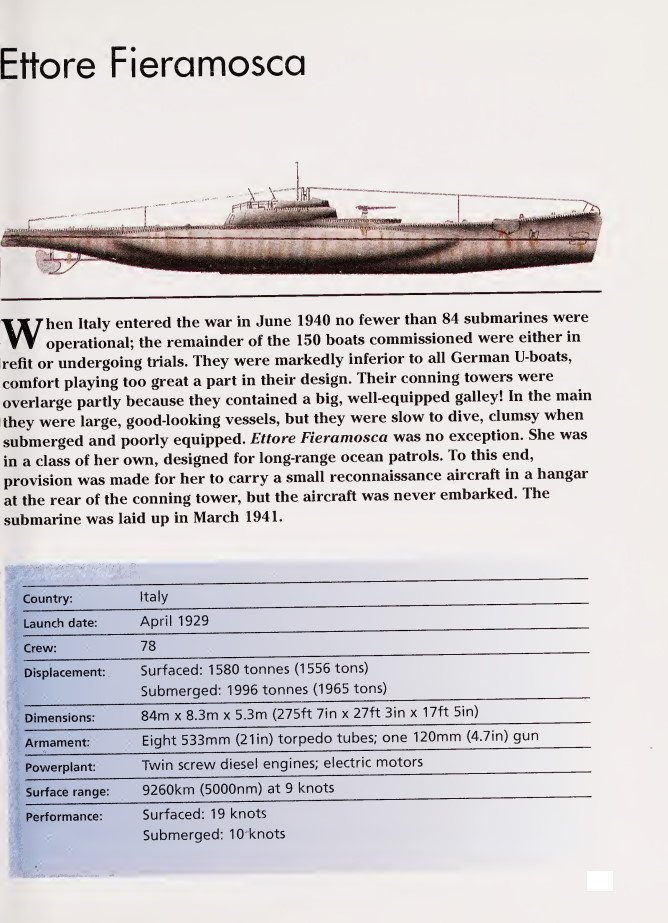
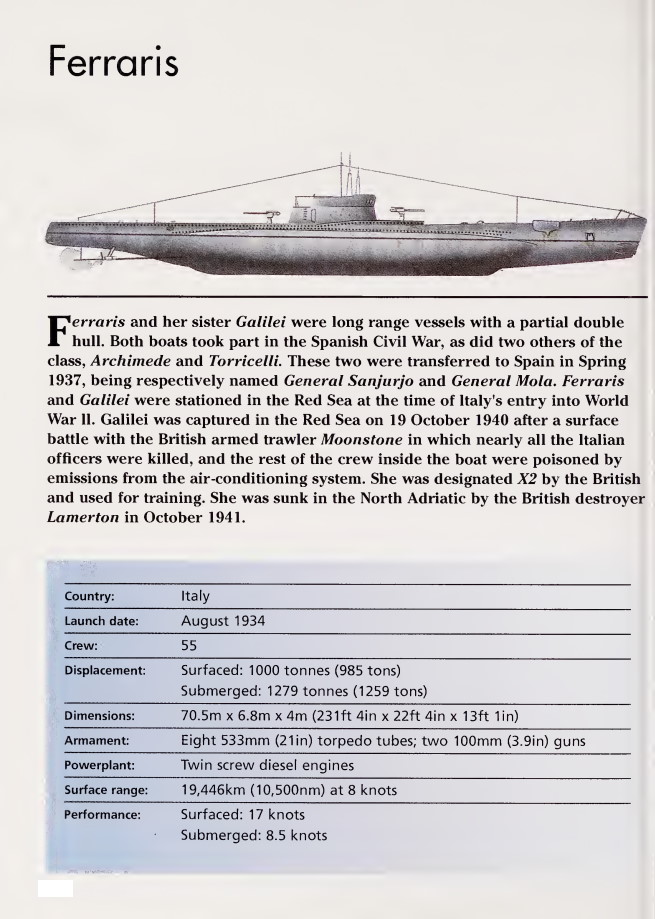
Type 1 ocean-going submarines
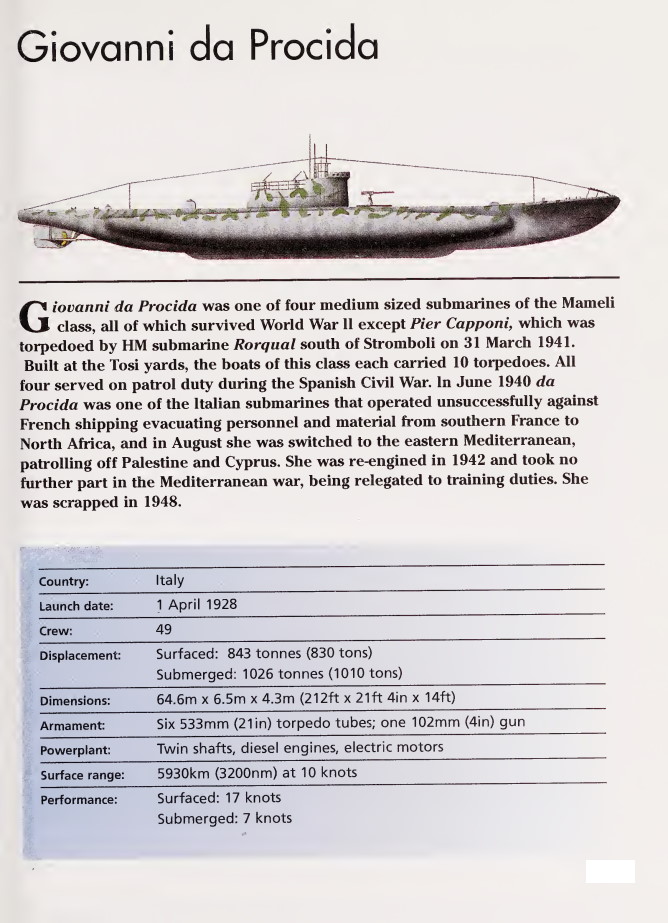
Mameli class : 4 units, built 1926–28
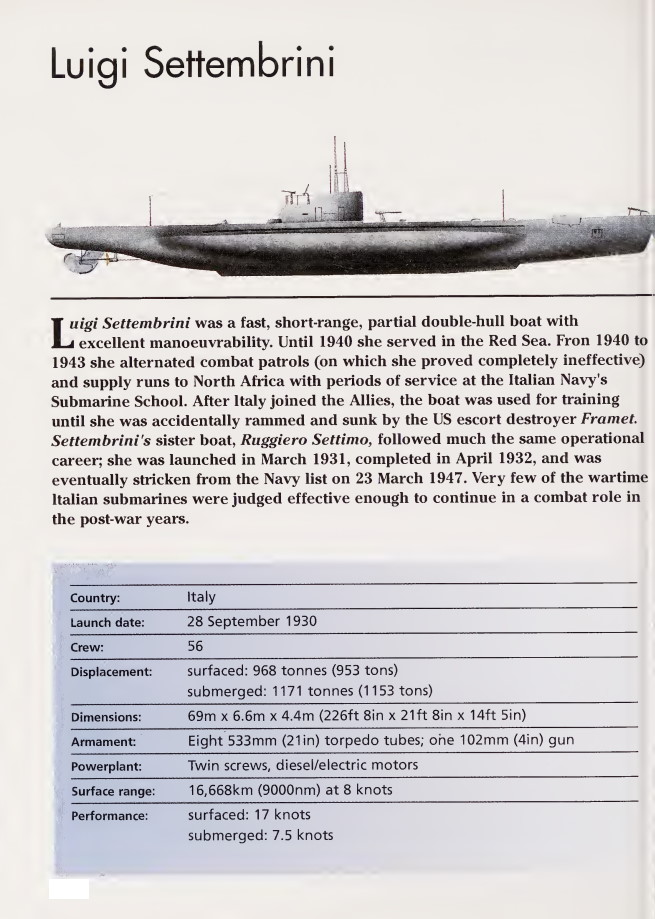
Settembrini class : 2 units, built 1930–31
Pisani class : 4 units, built 1927–28
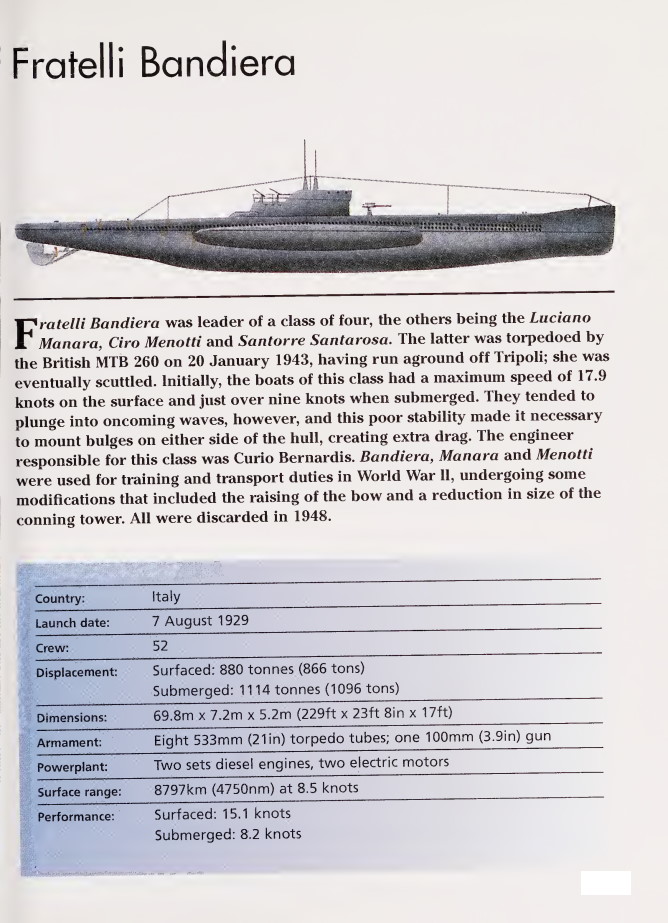
Bandiera class : 4 units, built 1929
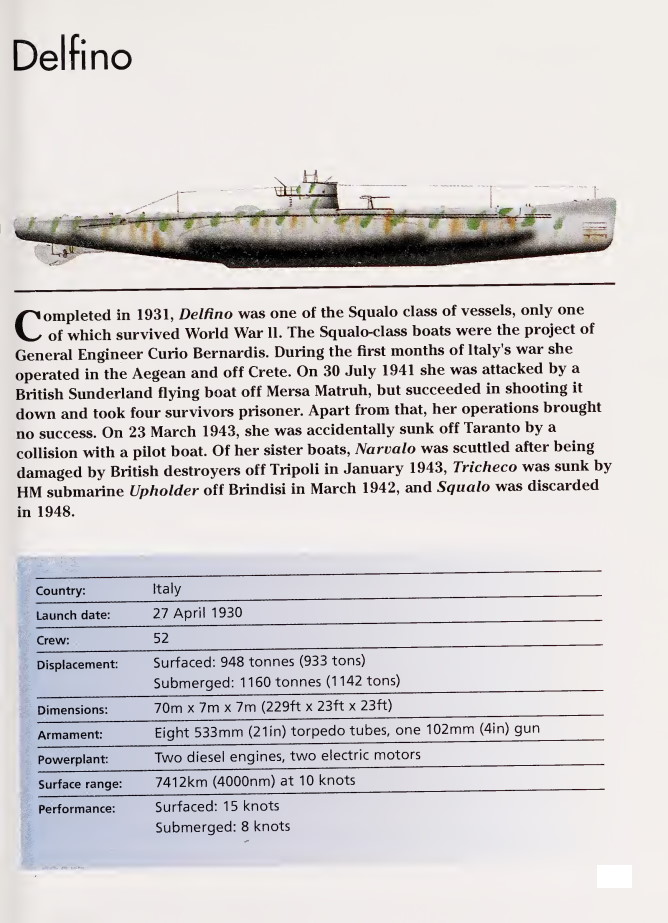
Squalo class : 4 units, built 1930
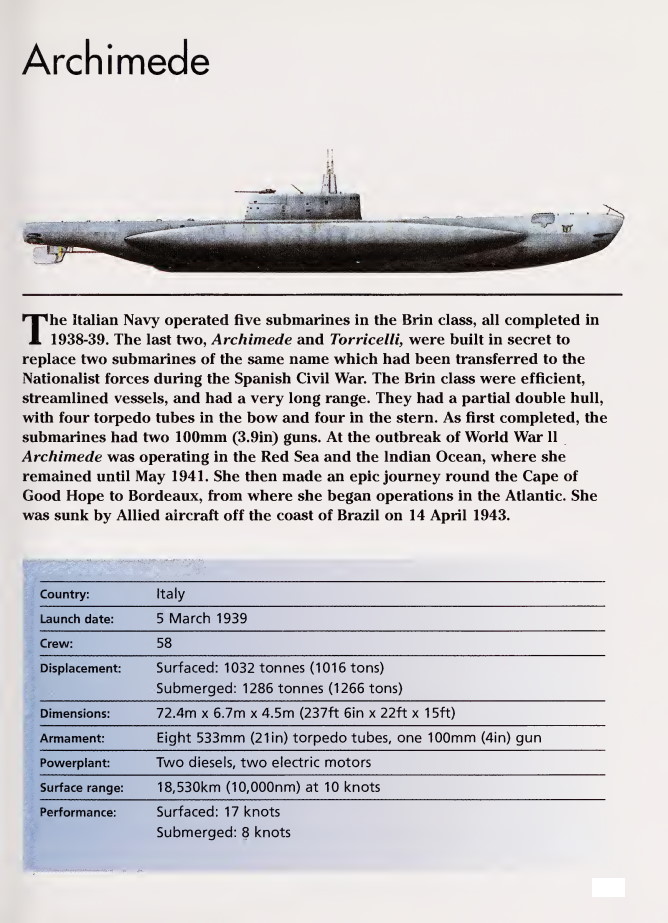
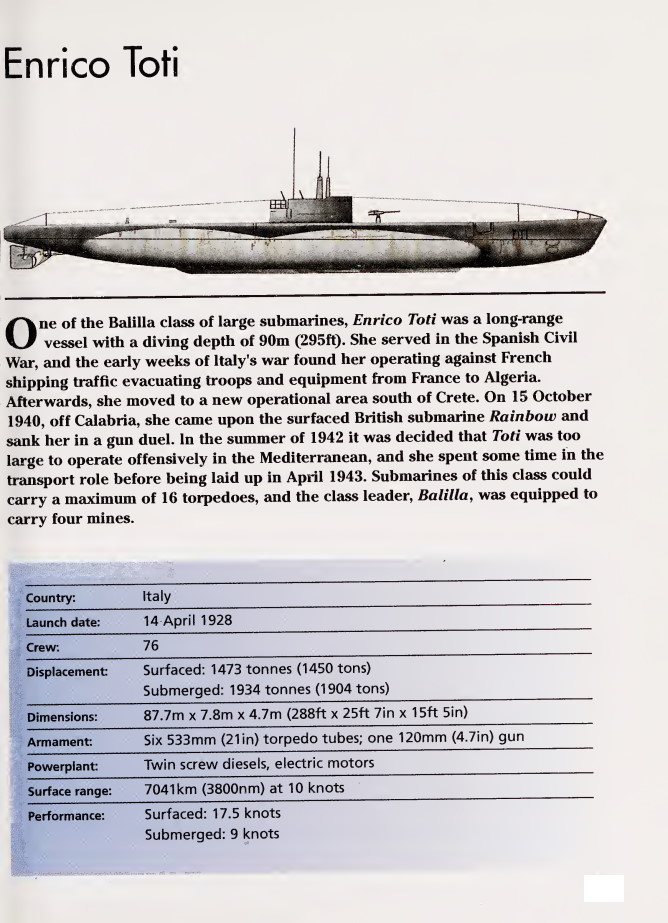
Balilla class : 4 units, built 1927–28

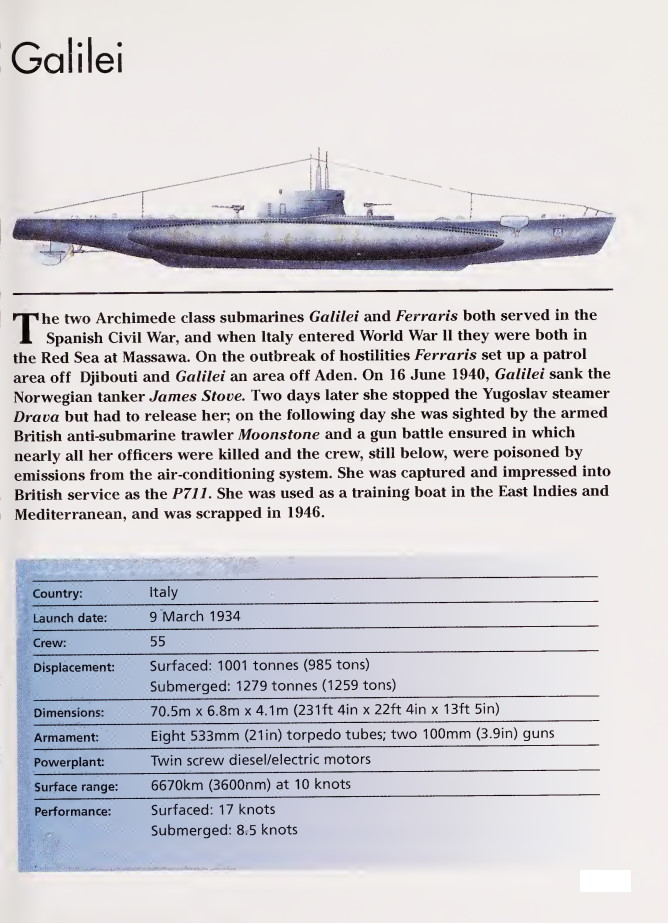
Archimede class : 4 units, built 1933–34
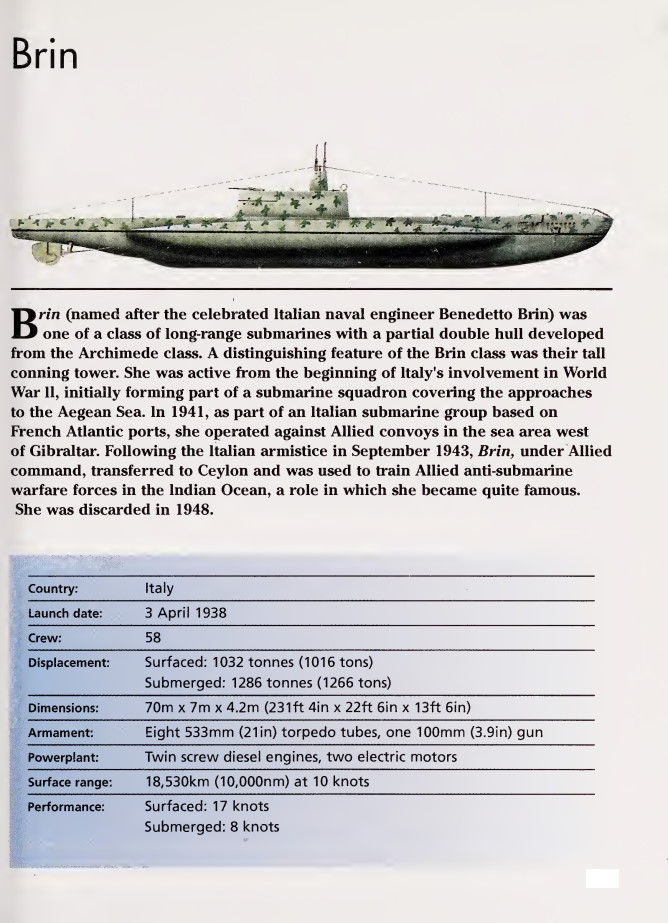
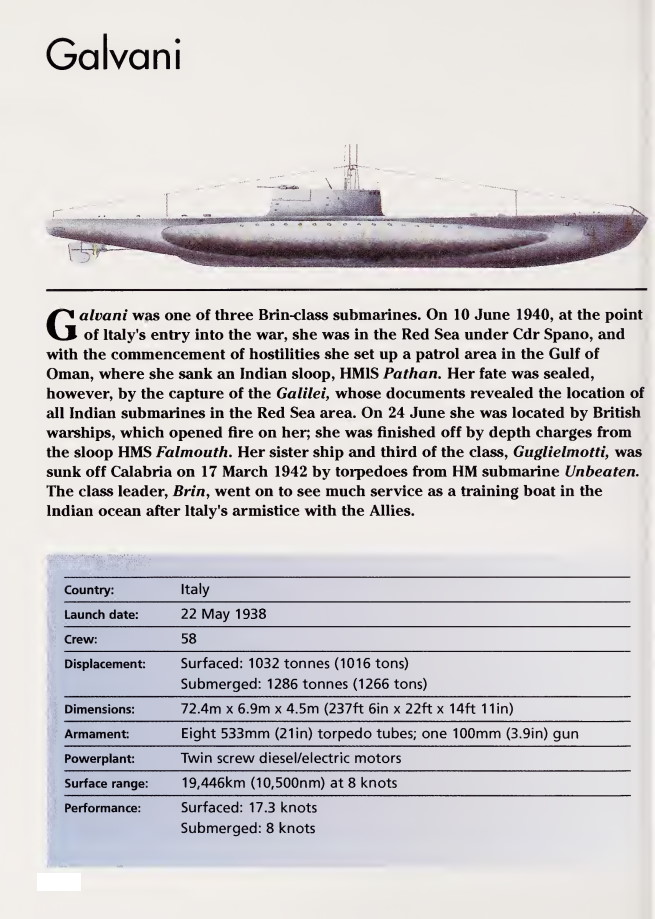
Brin class : 5 units, built 1938–39
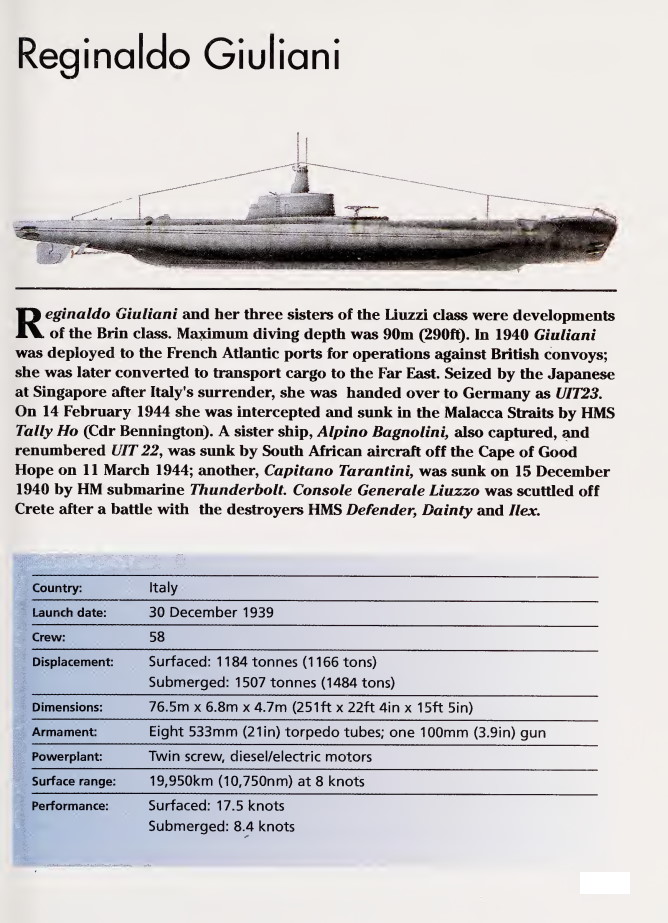
Liuzzi class : 4 units, built 1939–40
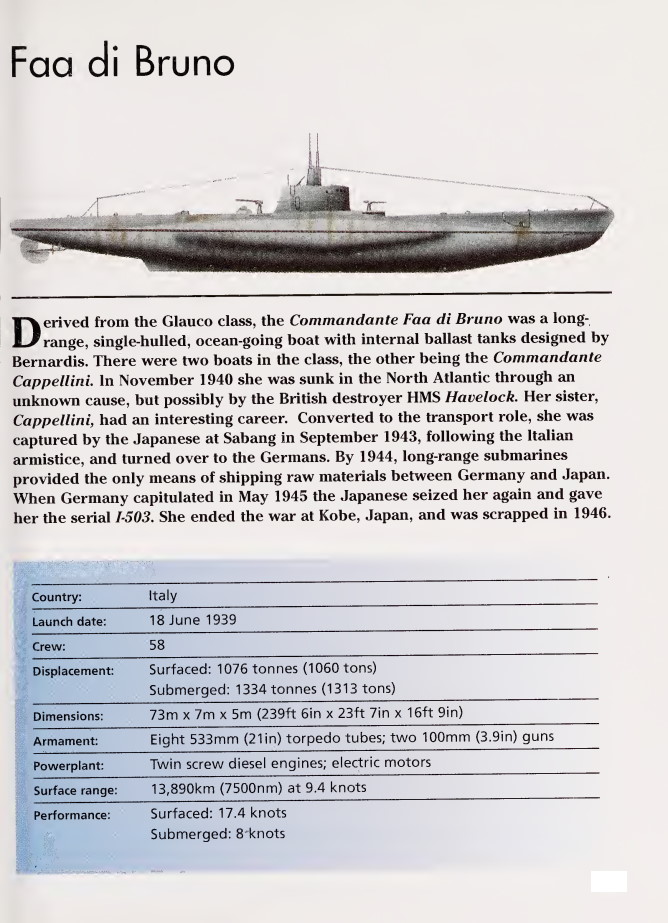
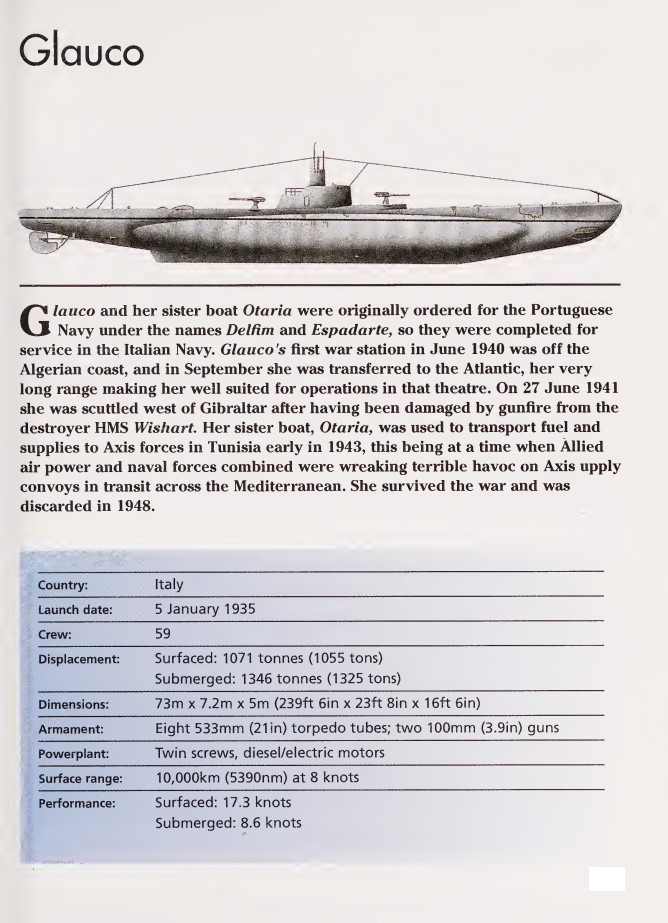
Glauco class : 2 units, built 1935
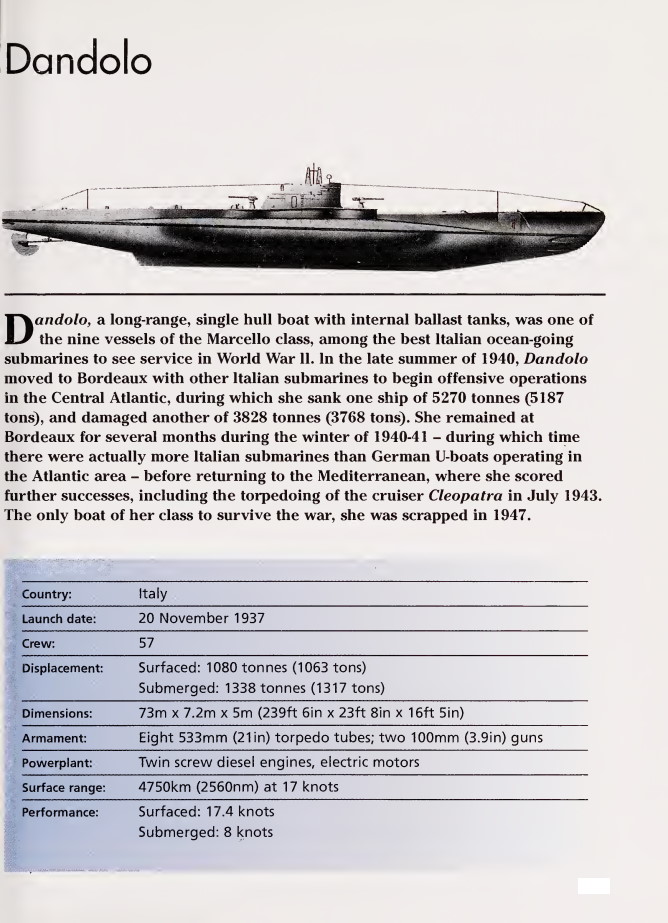
Marcello class : 11 units, built 1937–39
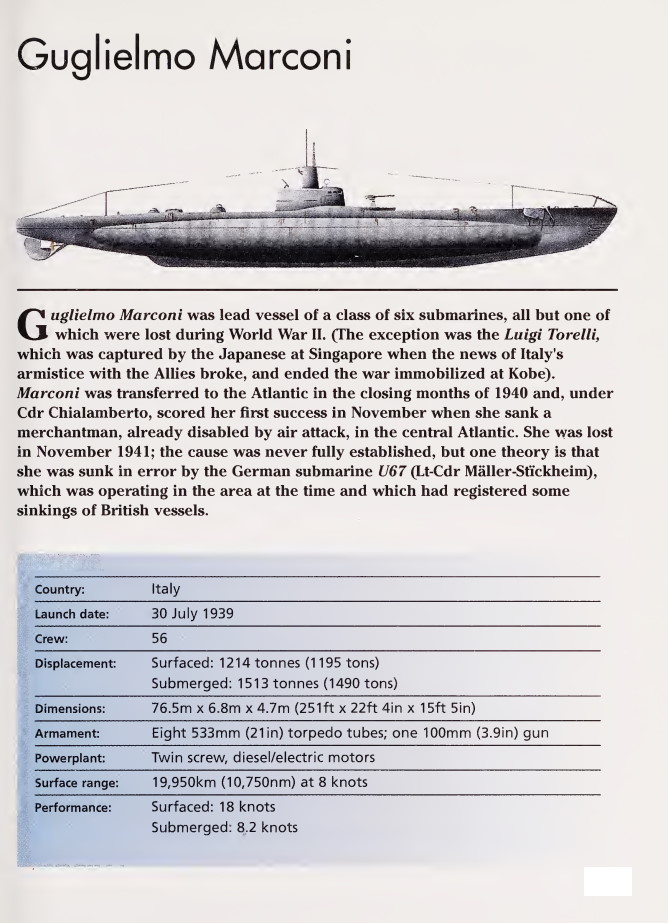
Marconi class : 6 units, built 1939–40
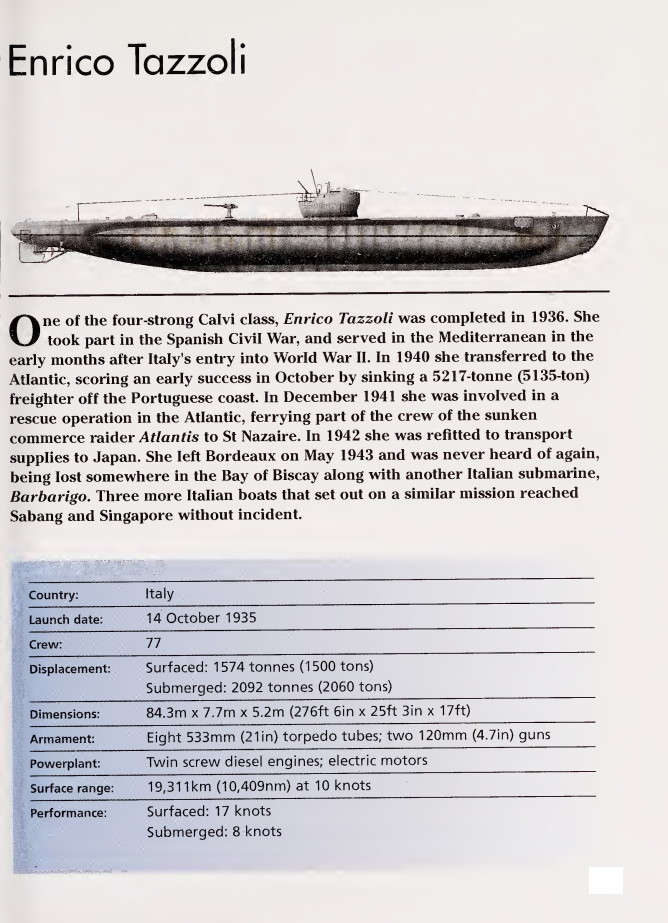
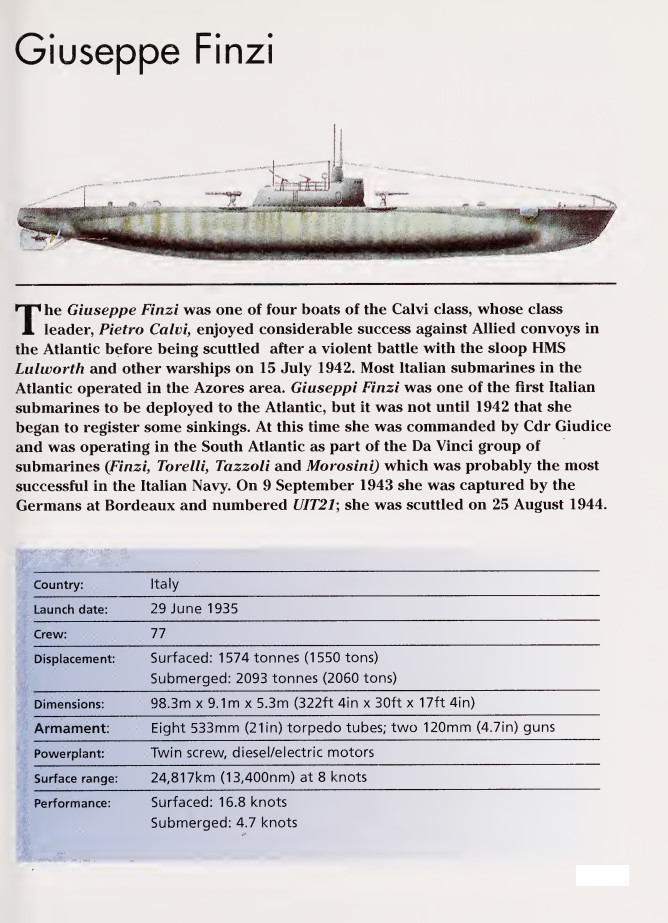
Calvi class : 3 units built 1935
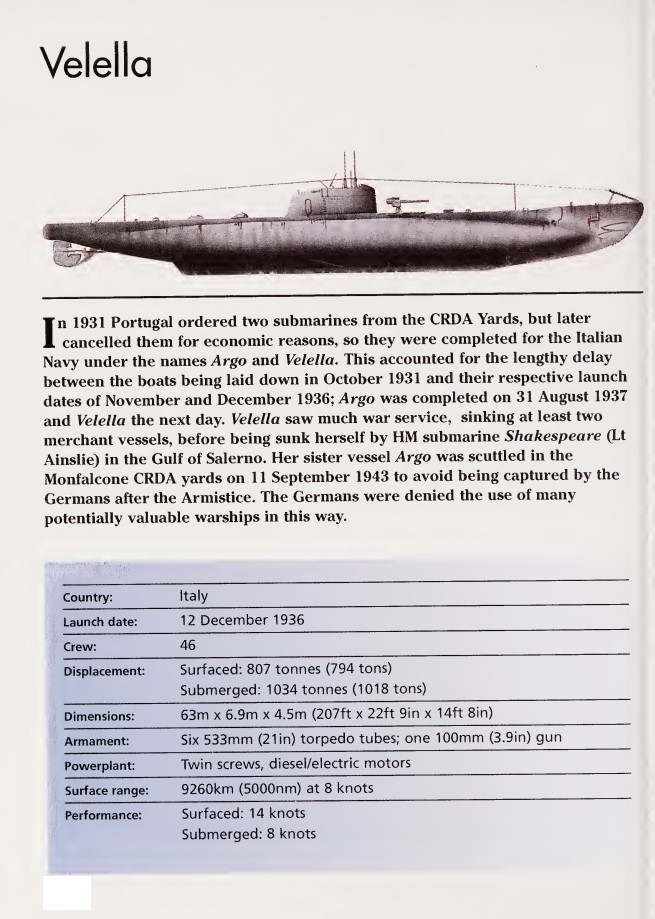
Argo class : 2 units, built 1936
Type 2 coastal/sea-going submarines (Series 600)
Argonauta class : 7 units, built 1931–32
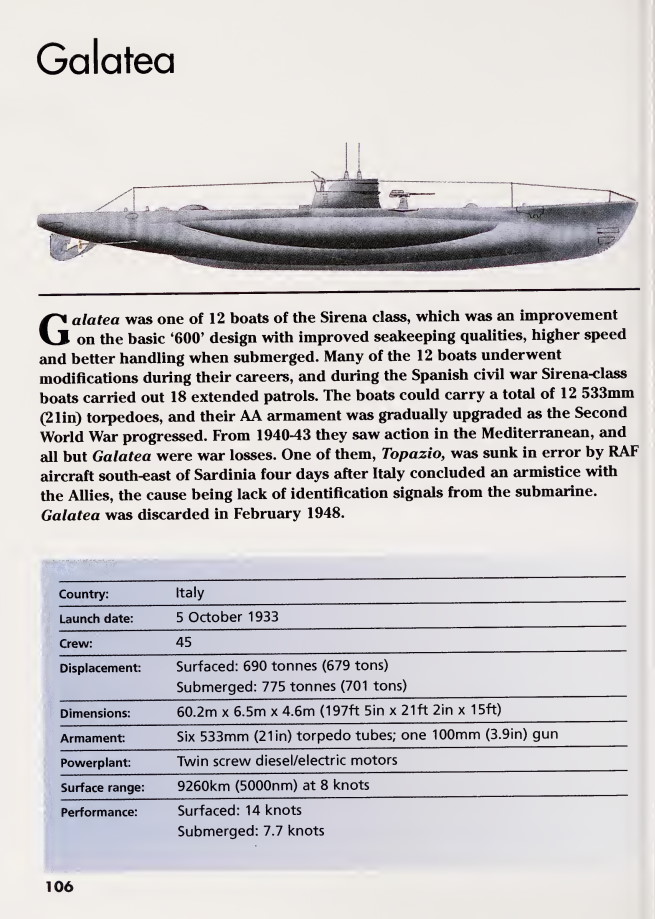
Sirena class : 12 units, built 1933
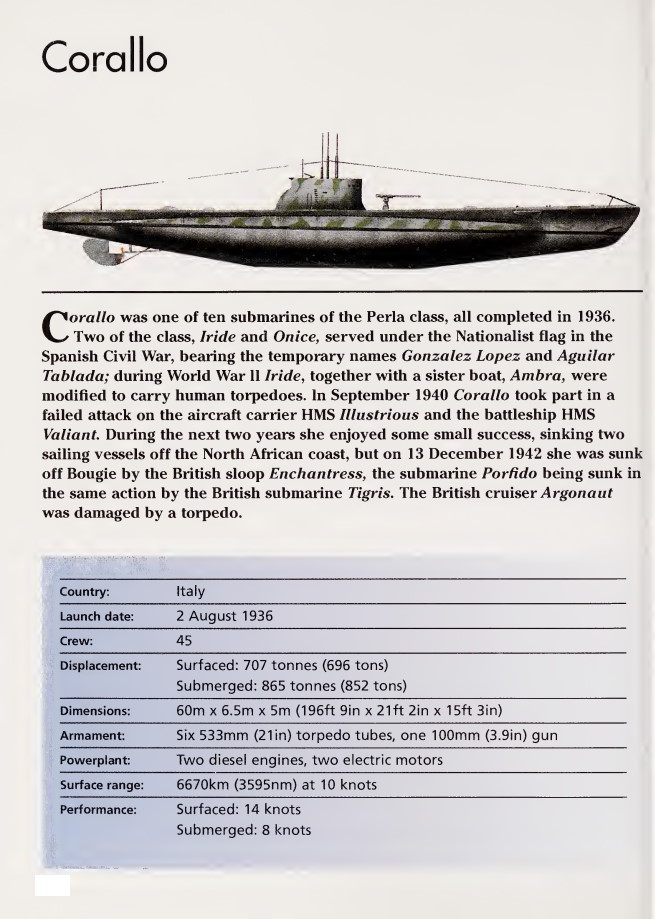
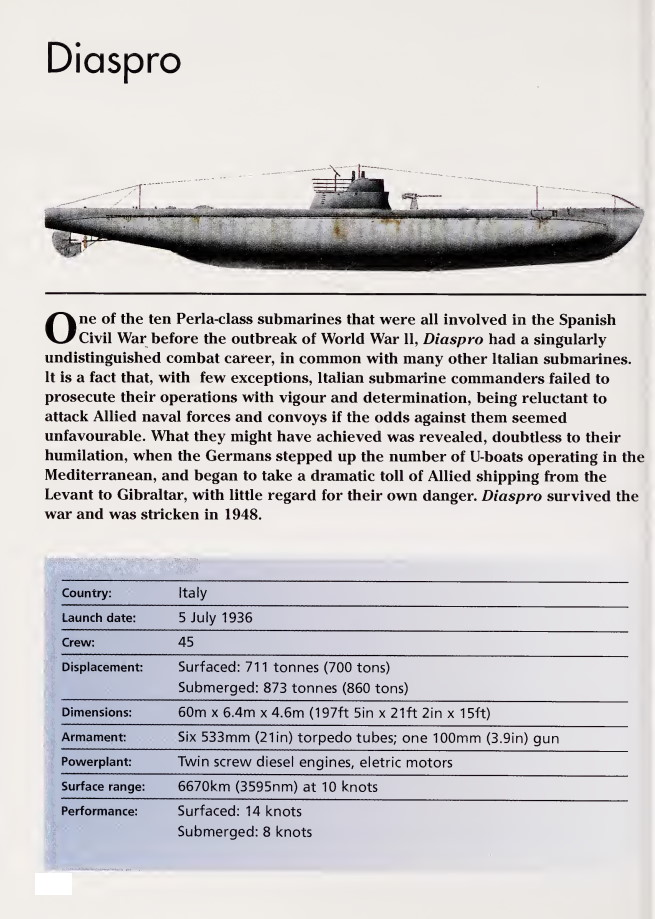
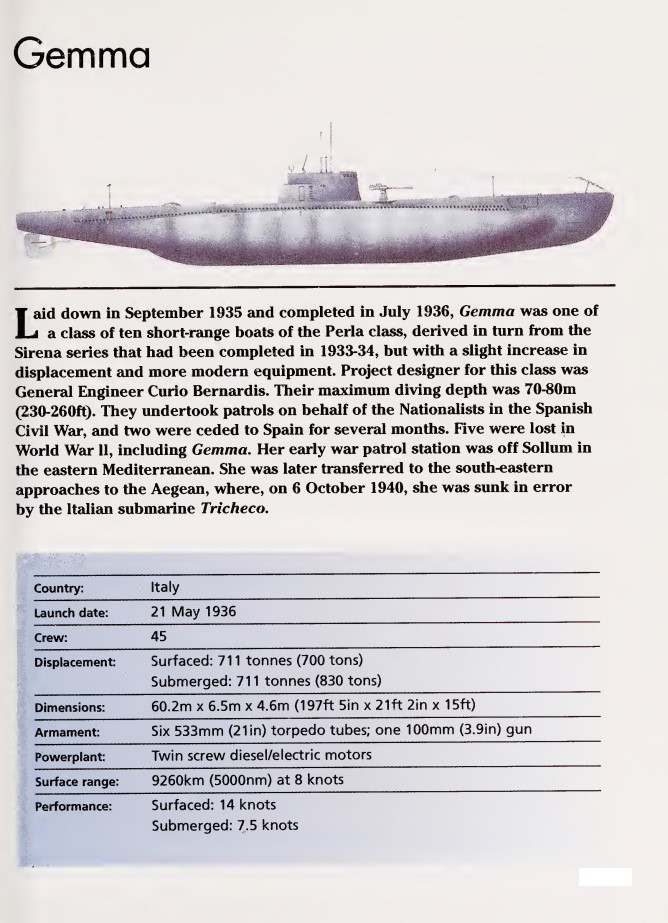
Perla class : 10 units, built 1936
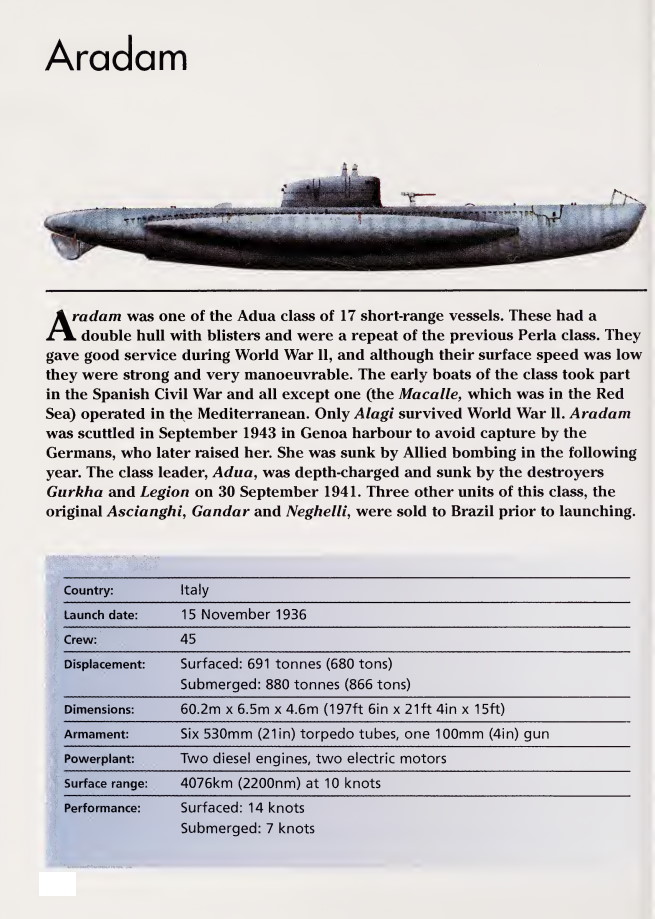
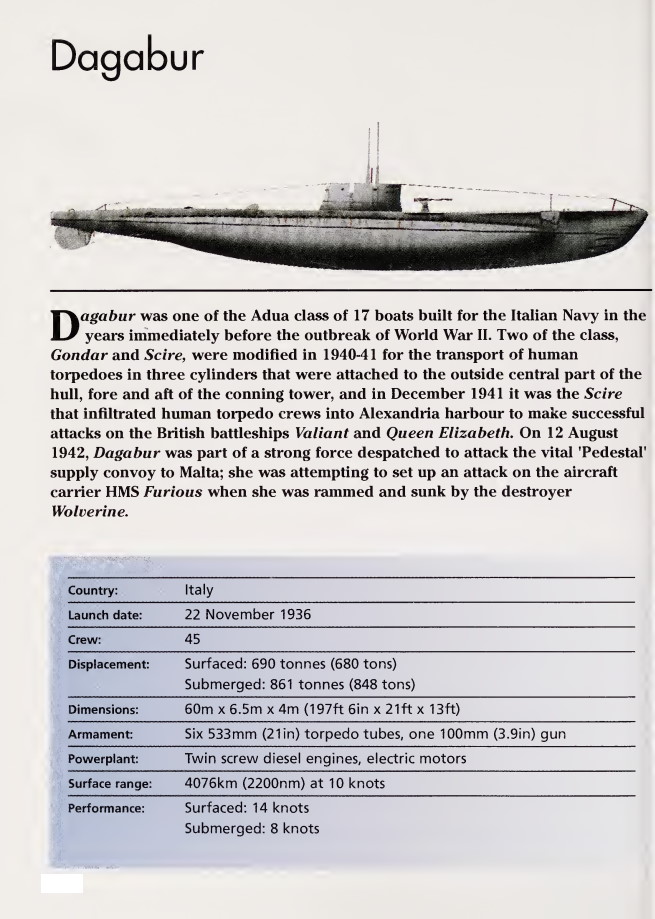
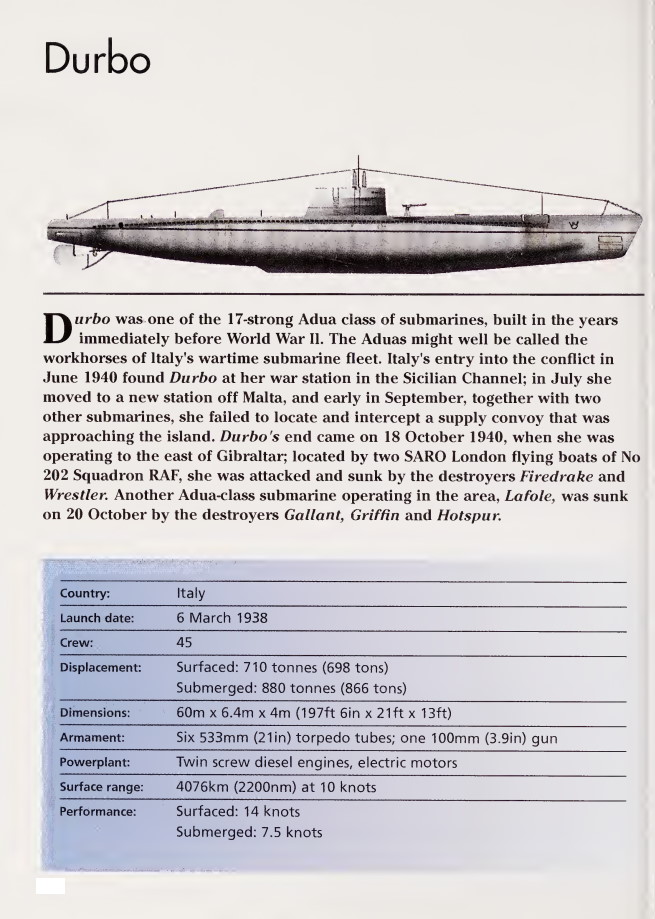
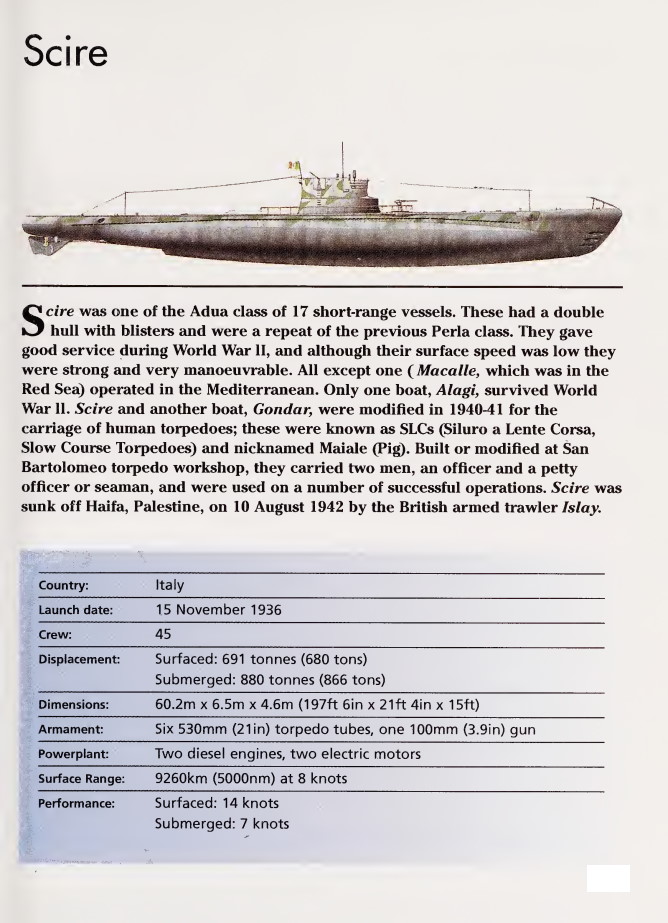
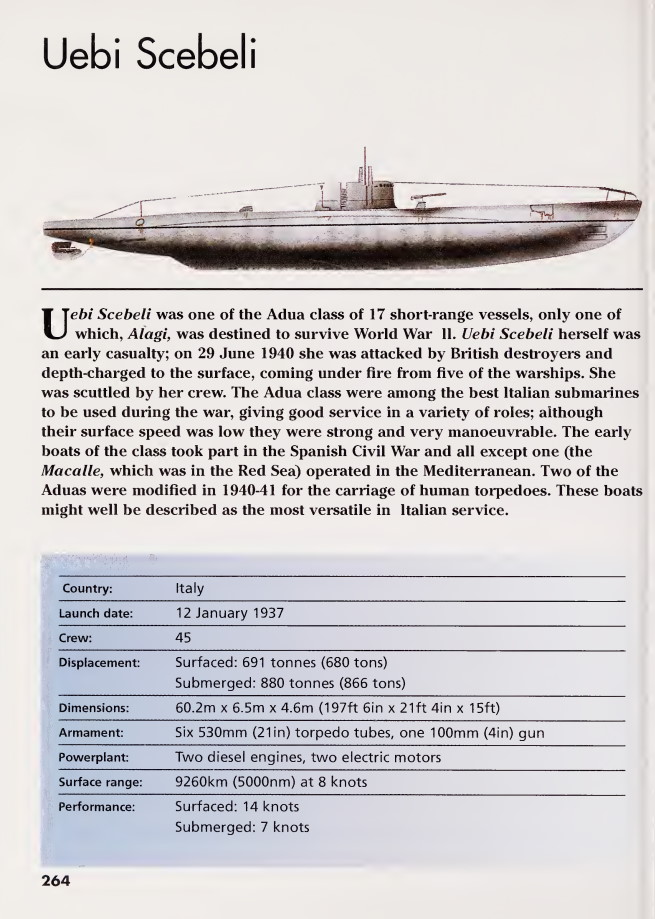
Adua class : 17 units, built 1936–38
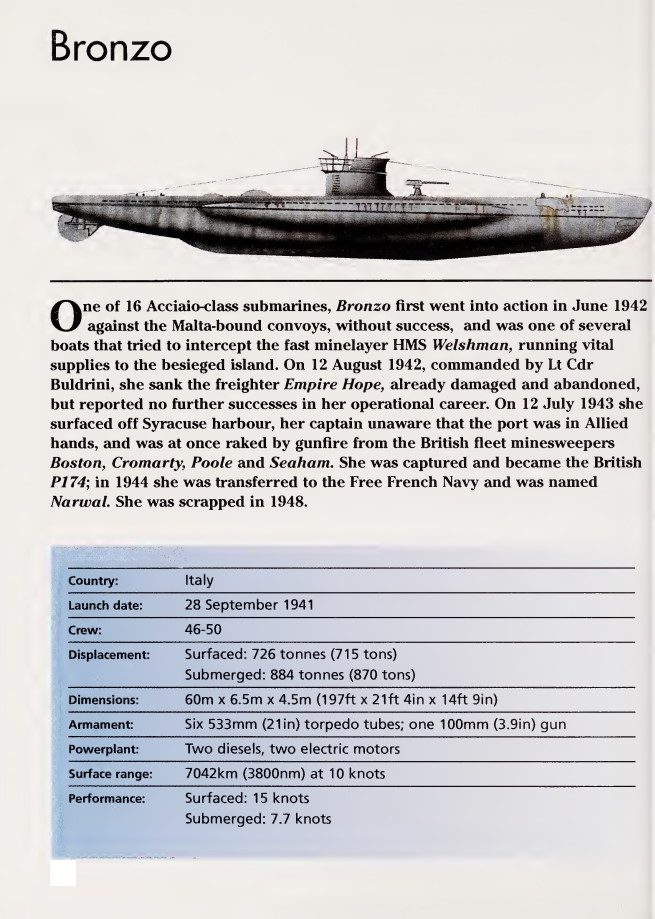
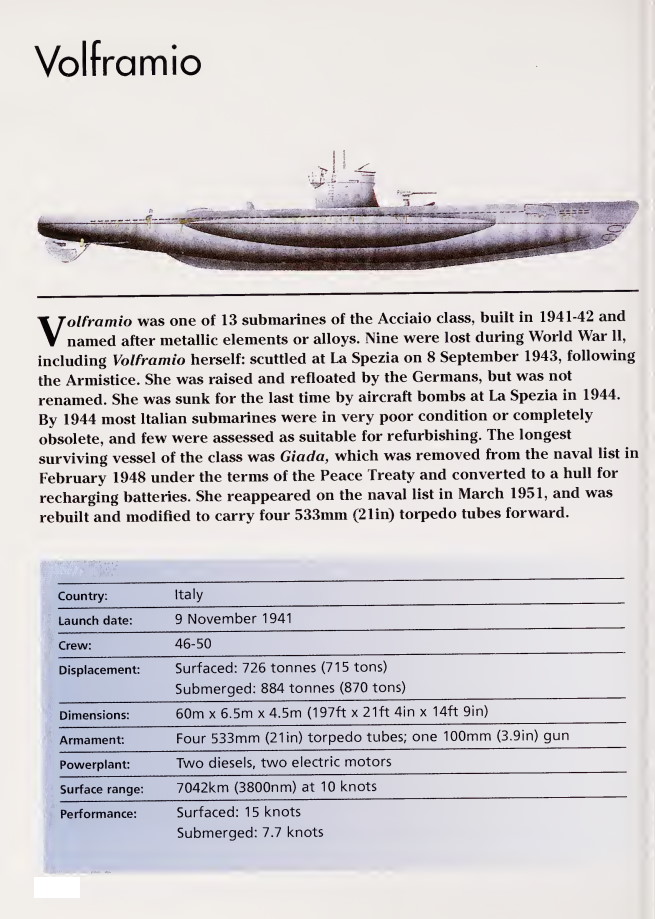
Acciao class : 13 units, built 1941–42
Type 3 minelayer submarines
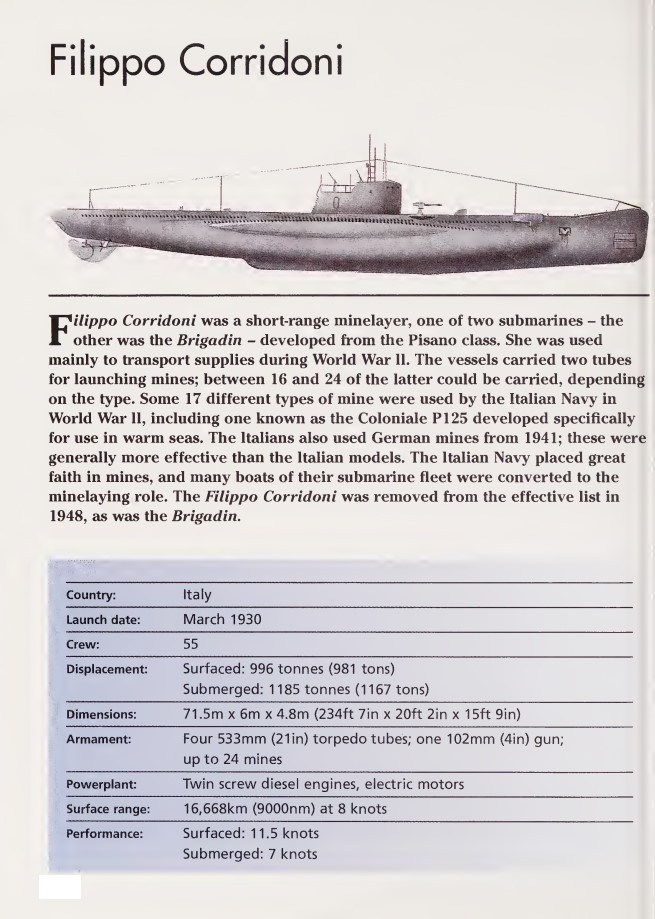
Bragadin class : 2 units, built 1929–30
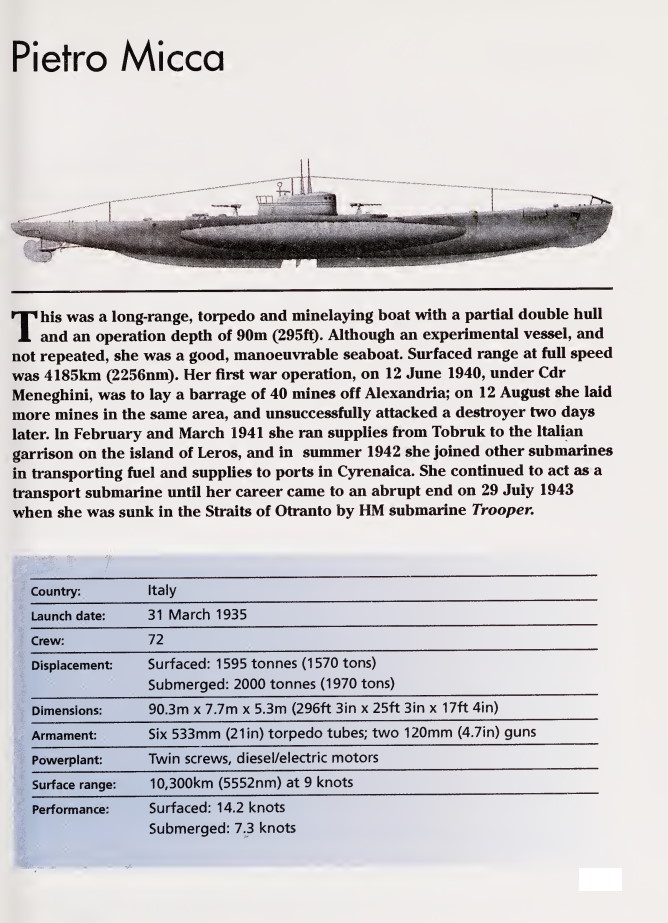
Micca class : 1 unit, built 1935
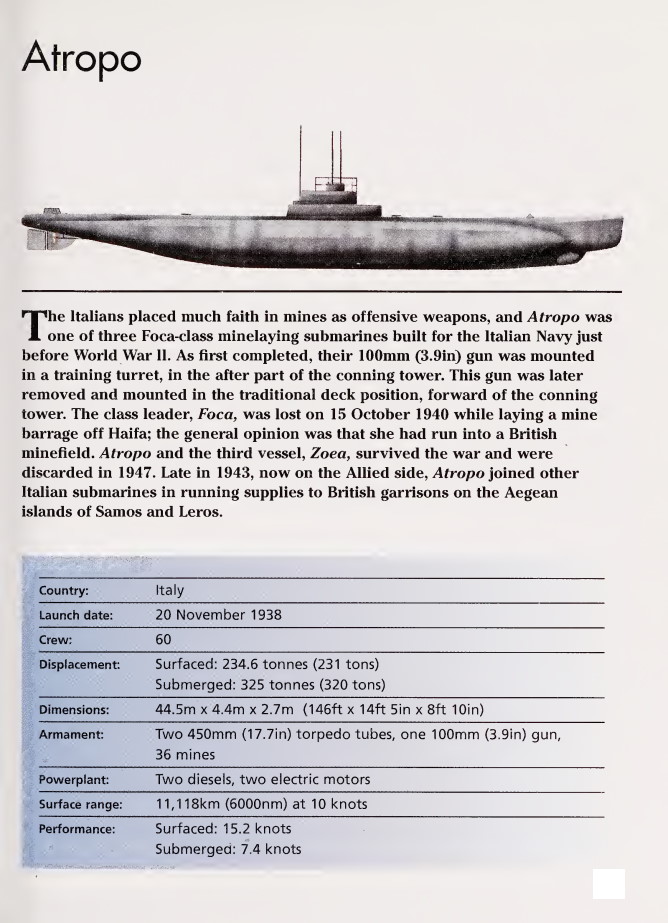
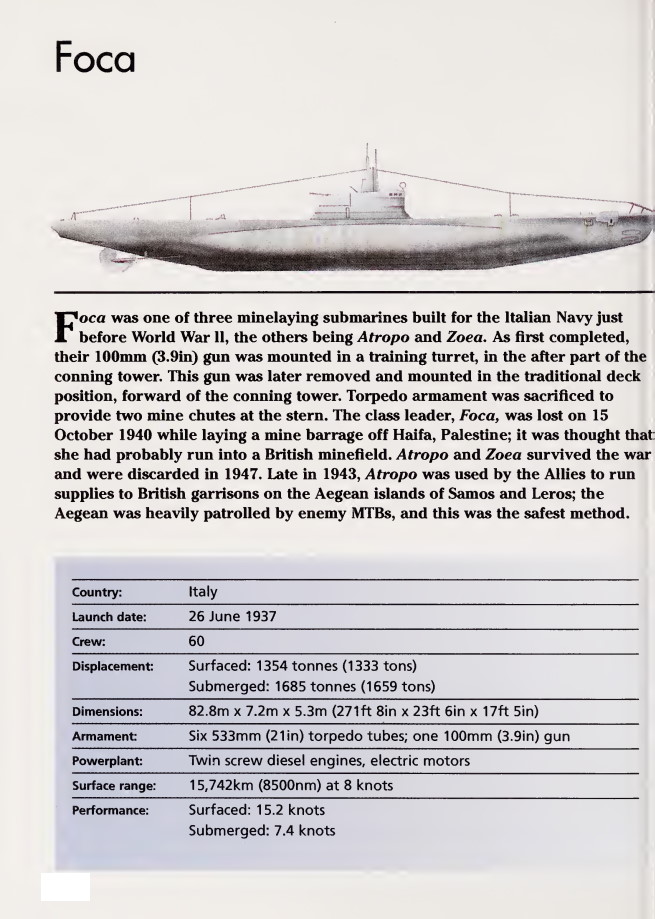
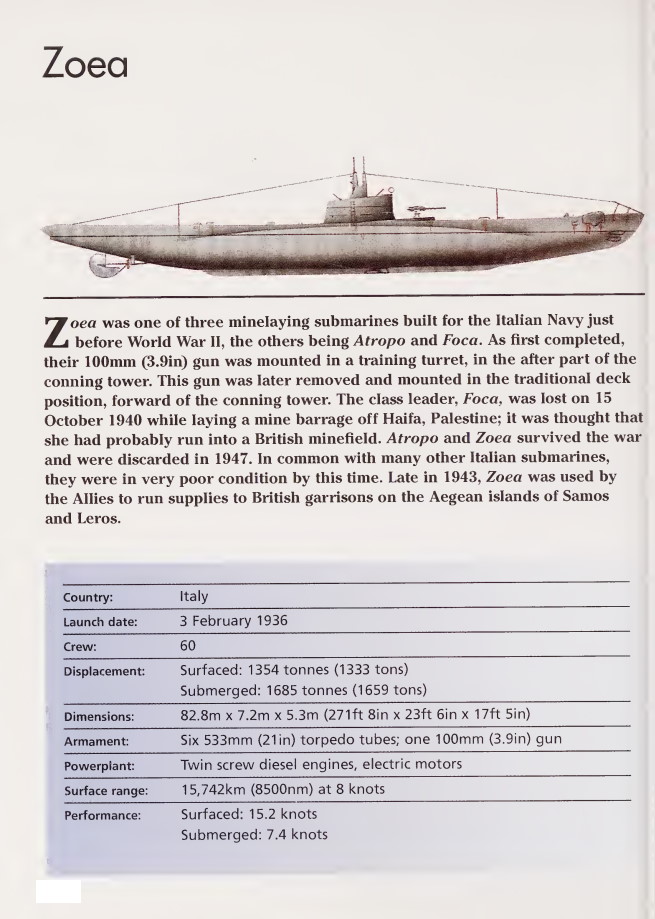
Foca class : 3 units, built 1937–38
Sea-going submarines (wartime construction)
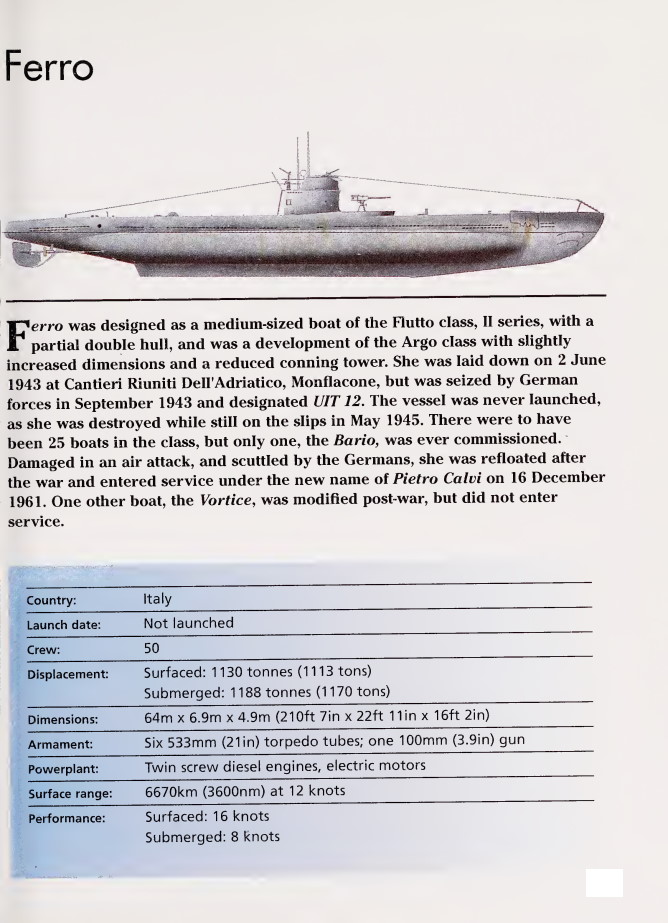
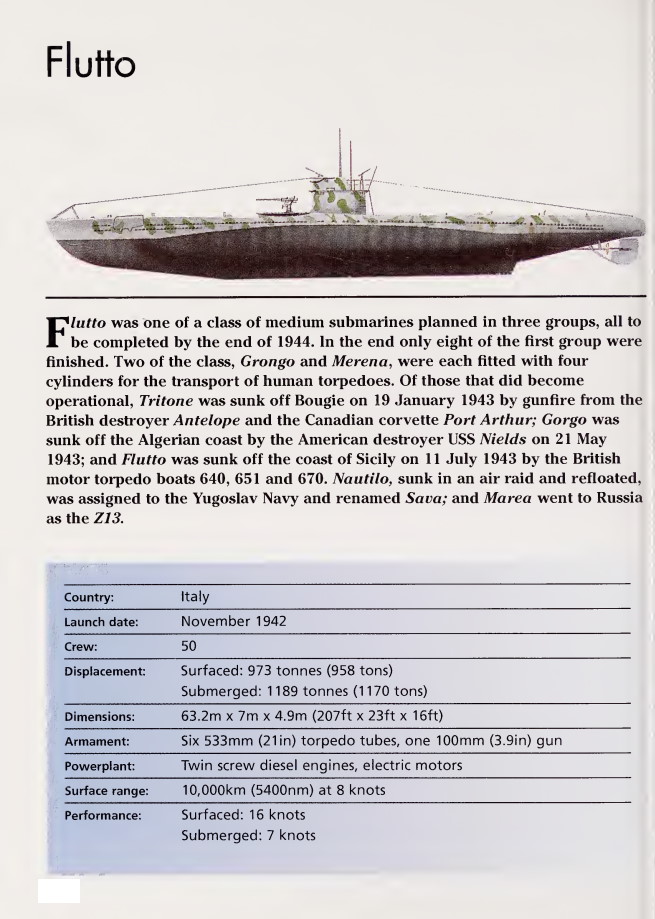
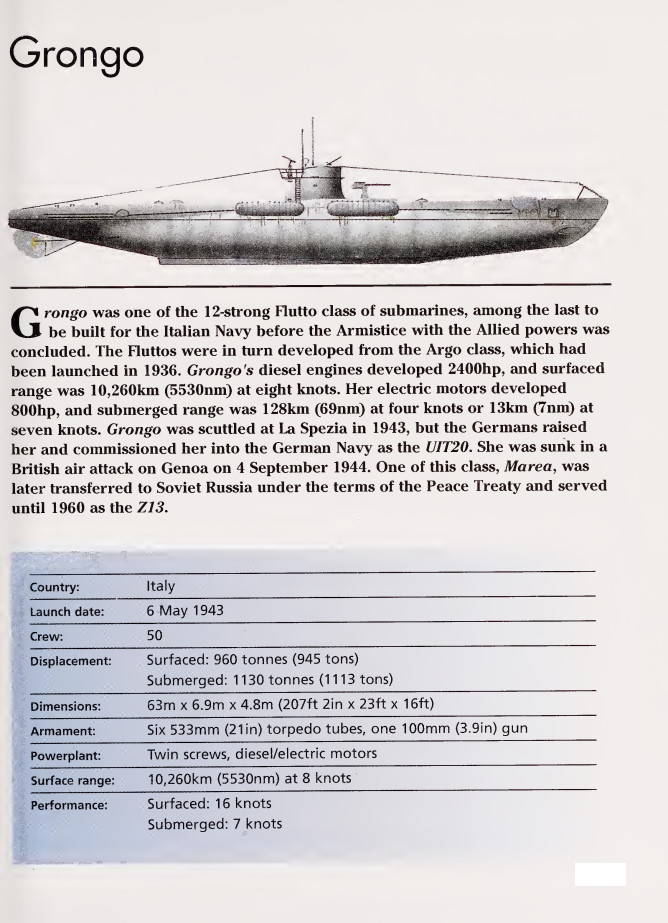
Flutto class : 48 ordered in 3 series; 13 built 1942–44
Type 1 : 12 ordered, 10 completed
Type 2 : 24 ordered, 3 completed
Type 3 : 12 ordered, none completed
Commerce raider submarines
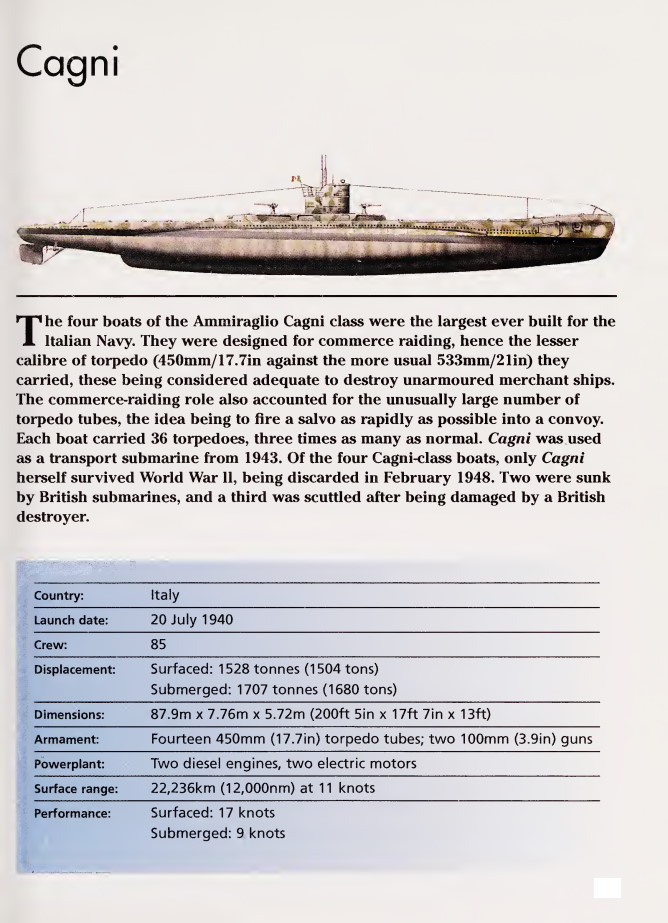
Cagni class : 4 units, built 1940
Transport submarines
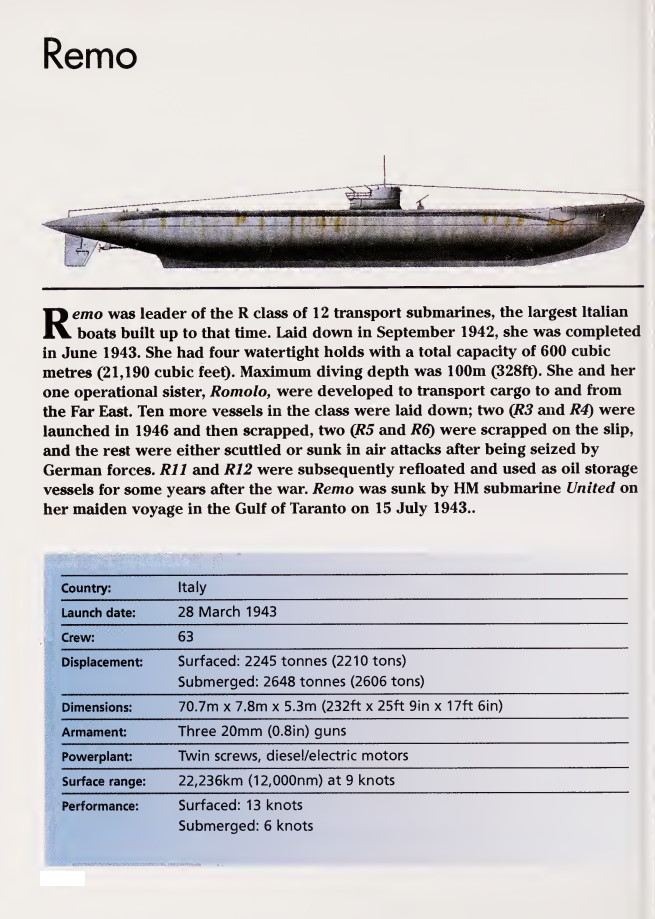
R/Romolo class : 12 ordered, 2 built 1943
Midget submarines
CA class : 4 units, built 1937–43
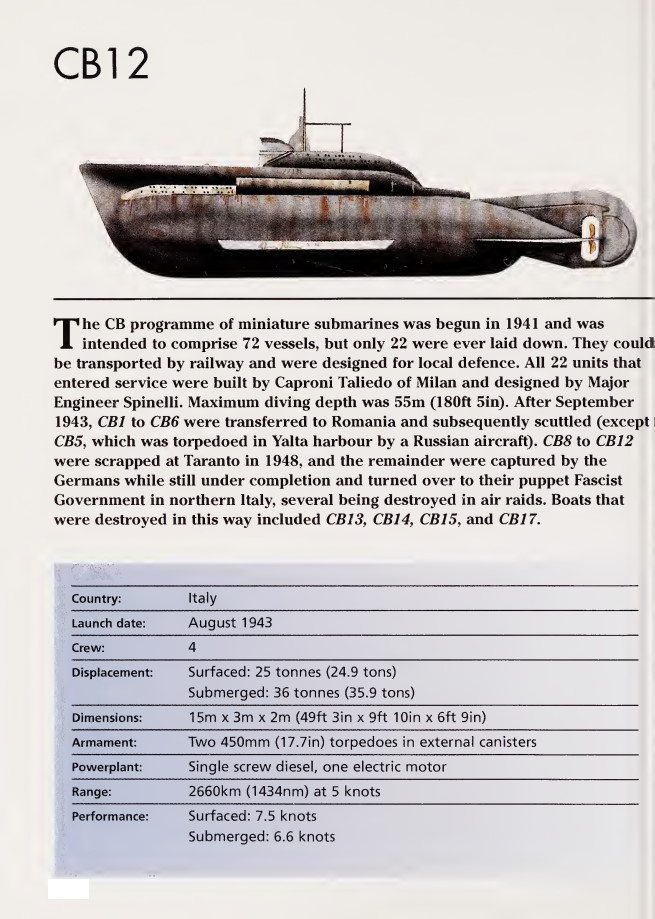
CB class : 22 units, built 1942–43
CC class : 4 ordered, none completed
CM class : 3 ordered, none completed
Ex-World War I submarines
H class : 8 units, 5 still in service in 1939
X class : 2 units, both still in service in 1939